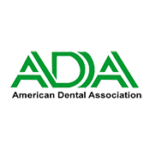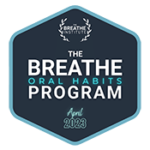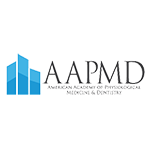It may or may not be common knowledge that there are nearly 100 to 200 species of bacteria, at any given time, lurking in your mouth. This is bacteria that also take up residence on your toothbrush as well! Now you know. How you store toothbrushes can also contribute far more greatly to the issue if you aren’t careful. After all, the point of brushing our teeth is to remove bacteria, so inevitably, there will be much present on your toothbrush. It may not be a pleasant subject to read about or discuss, however; teaching consistent habits early on will help construct healthy choices for your little one’s health and overall well-being.
So why should you care about where the toothbrush is placed between uses and why should you change it out? Does it really matter? Read on to find out the how and why you may not be aware of!
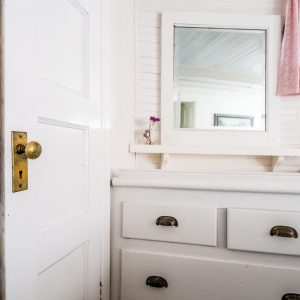
Germs thrive in warm, moist environments
Making toothbrushes prime estate for germs to live and grow. Bathrooms are often warm and damp from the steam of bathing, which creates an environment where your toothbrush may remain damp between uses. The ideal way to store toothbrushes is upright such as in a toothbrush clip/holder in a place where it can dry between uses, such as in a tight-closing mirror cabinet or even in the cupboard under the sink if you have a cabinet counter.
Avoid air tight travel cases too as they don’t allow air flow to dry and create an ideal environment for visible mold, which starts to grow well before you see it! Air drying kills anaerobic bacteria that can cause gum disease and cavities. Use the bathroom fan to circulate air and prevent steam from building up in excess. If you have a bathroom window, open it slightly to allow steam an escape.
Airborne and splash bacteria
Have many sources in the bathroom alone. Droplets of wastewater from flushing the toilet, hand washing, and even shower steam introduce an array of other bacteria to your toothbrush… all day long. Wherever you do find best for storage in your space, DON’T store toothbrushes off the side of the sink or on the counter top, no matter how rushed you may be! Close the toilet lid before flushing and instruct children to do the same. Teaching this during potty training days too can help ingrain this habit to help reduce contamination of the rest of your bathroom.
The common cold and flu
Viruses are active days and weeks before visible symptoms are present. They can also linger a while, though usually not for long. Still, you should change your toothbrush if you have been sick and be careful not to store toothbrushes of family members together to avoid cross infection. When you buy toothbrushes or visit your dentist, ask for one or two extra to keep on hand, unopened, for a fresh replacement after illness.
Normal wear and tear
Changes your toothbrush effectiveness more than you may think. Bristles can break down and splay causing them to become dull and unable to reach into the cracks and crevices of the teeth. Three months is the general guideline and if you or your kids tend to be heavy handed on toothbrush use, you may find replacement required more often. Use common sense to figure out when you and the family are due for new brush. Keep in mind too that maintenance between uses will greatly help and even prevent unwanted nasties.
Here are a few things you can do between uses:
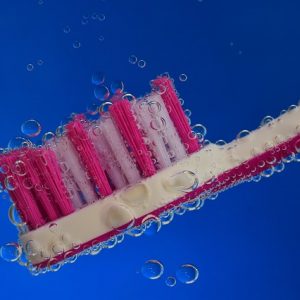
Rinse in hot water
For about 30 seconds before and after brushing to remove all traces of toothpaste and kill off a majority of microbes, many of which can’t survive beyond about 105 degrees Fahrenheit. Rinse the brush at a head-downward angle and tap out excess water with the bristles facing down prior to storing upright. Once a week, you can boil water a few minutes and submerge the brush head for about 20-30 minutes in a glass container.
Soak brush heads in mouthwash
In an antibacterial mouthwash for 20-30 minutes after rinsing with hot water. A gum disease-fighting mouthwash or one with alcohol or cetylpyridinium chloride will do the trick. White vinegar is also a good option aside from mouthwash. This is also ideal for toothbrushes fresh out of the package as they are not perfectly clean either.
Hydrogen Peroxide rinse
Isn’t just for owies! This is especially helpful after each brushing if you are sick. Soak for 5 minutes once a week for regular maintenance. Just don’t reuse the same hydrogen peroxide, particularly because it will break down and lose effectiveness when exposed to light.
Don’t forget the toothbrush holder!
This study by NSF International revealed that the toothbrush holder takes the title for germiest place in the bathroom! Whether you use a clip holder, cup, or other upright-holding way of toothbrush storage, clean it in hot, soapy water at least once a week or when you clean your bathroom. You can also rinse or soak with vinegar rinse under hot water. Air dry on a clean towel or paper towel.
Germs are everywhere, it’s a fact of life, and why we have immune systems to help protect us on the daily basis from common household bacteria. Don’t push your luck though and now that you know just how bacteria ridden the toothbrushes in your household really can be, take a few moments to maintain them between replacements every three months. Happy brushing!



